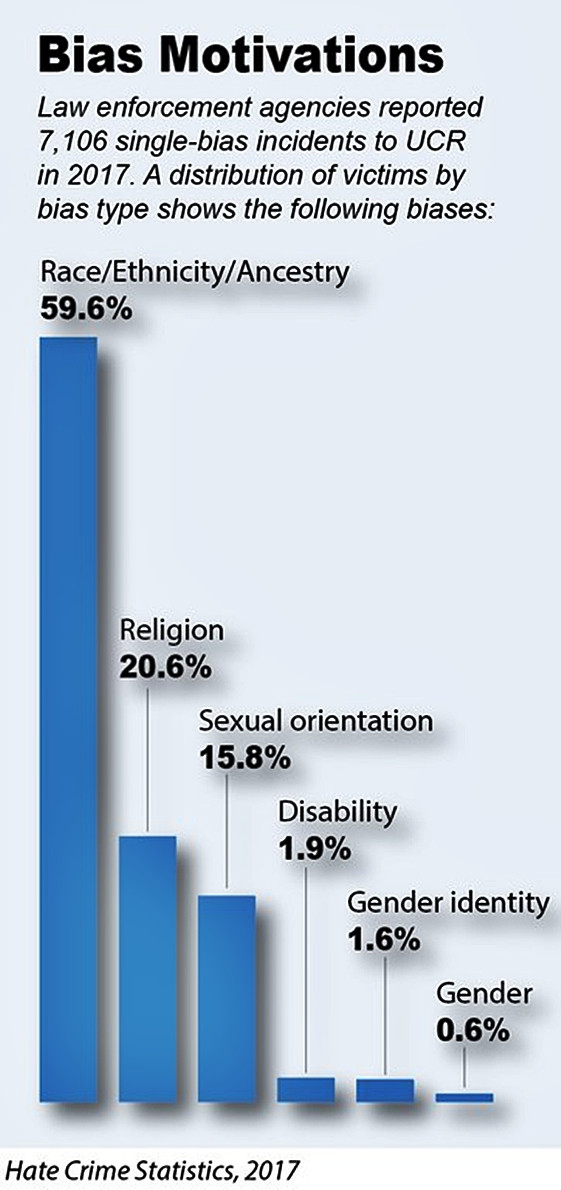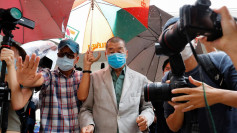Now is not a good time to be a non-white person in the United States. Hate crimes committed by white Americans against non-whites jumped a record 17% in 2017 over 2016, fueled by the bigotry and racism of U.S. president Donald Trump. Trump became president in January 2017.
One in two hate crimes were directed against African-Americans while 11% victimized Latinos. In addition, hate crimes throughout the entire United States increased for the third year in a row in 2017, said the Federal Bureau of Investigation (FBI) in its Hate Crime Statistics, 2017 report released yesterday.
The FBI defines a hate crime as a "criminal offense against a person or property motivated in whole or in part by an offender's bias against a race, religion, disability, sexual orientation, ethnicity, gender, or gender identity."
It reported 7,175 incidents classified as hate crimes compared to 6,121 such crimes in 2016. For the past three years, the FBI has noted an increase in hate crimes year-to-year; a five percent increase between 2015 and 2016, and a 17 percent increase between 2016 and 2017.
In 2017 alone, the FBI recorded 5,000 hate crimes that were directed against persons. More specifically, these were crimes such as assault or robbery. Another couple thousand were targeted against property - businesses, places of worship, or homes, for example. The remainder were targeted at both.
African-Americans were victims of 48.8 percent of reported hate crimes in 2017. Whites were victims of 17.5 percent of such crimes while Latinos were victims of 10.9 percent.
The analysis shows that the increase in hate crimes coincides with the debut of Trump as U.S. president. That's not a coincidence, said Rev. Amos Brown, president of the San Francisco branch of the National Association for the Advancement of Colored People (NAACP).
Brown said this president "has emboldened those who are perpetrators of hate with his rhetoric, his vulgarity and with his outright abusive language attacking people from Caribbean Islands and from Africa. It begins at the top."
Teresa Drenick, deputy district attorney for Alameda County, California, believes the rise in hate crimes can, at least in part, be pinned on Trump. She thinks people, especially bigots, are now more emboldened under Trump.
The FBI said there were 7,106 single-bias incidents involving 8,493 victims in 2017. A percent distribution of victims by bias type shows that 59.6 percent of victims were targeted because of the offenders' race/ethnicity/ancestry.
A further 20.6 percent were targeted because of religious bias; 15.8 percent were victimized because of sexual-orientation bias; 1.9 percent were victimized because of a disability; 1.6 percent were targeted because of gender identity bias, and 0.6 percent were victimized because of gender bias.
There were 69 multiple-bias hate crime incidents involved 335 victims.
Of the 5,084 hate crimes against persons in 2017, 44.9 percent involved intimidation; 34.3 percent were for simple assault, and 19.5 percent were for aggravated assault.
There were 3,115 hate crime offenses classified as crimes against property. Most of these (74.6 percent) were acts of destruction/damage/vandalism. Robbery, burglary, larceny-theft, motor vehicle theft, arson, and other offenses accounted for the remaining 25.4 percent of crimes against property.
There were 238 additional offenses were classified as crimes against society. This crime category represents society's prohibition against engaging in certain types of activity such as gambling, prostitution, and drug violations. These are typically victimless crimes in which property is not the object.






